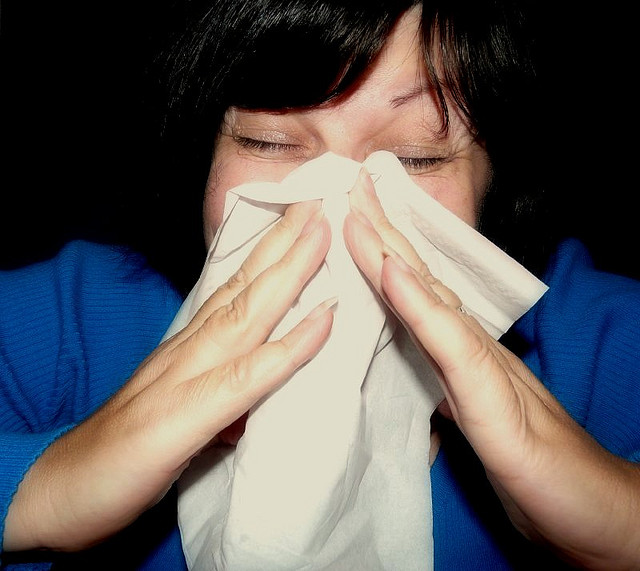Seasonal Allergies: How To Help

Types of allergies include seasonal (related to changes in temperature and environment), perennial (year round), animals, dust mites, molds, food and virtually anything. Many allergy sufferers also have asthma, and allergens are common triggers for asthma attacks with wheezing and shortness of breath.
SEE ALSO: Rash Decisions: Vaccine Refusal Is A Position of Privilege
Hay fever (nasal allergies) is the most common type of allergies, and the arrival of spring can be miserable for allergy sufferers. Spring begins blooming in late February in Los Angeles, and the warm weather this year has sped up its arrival.
So, what can be done to help? Here are a few tips:
1. First, admit that you have allergies; denying that your nagging cough, runny eyes and constant post-nasal drip are allergy-triggered may keep you from seeking help.
2. Avoid the allergen (the substances that triggers your allergies). For example, if it’s grass, skip the grassy knolls in the park.
3. Seasonal allergy sufferers often have other allergies, so it’s useful to keep protective coverings (allergen-free and zipped) on mattresses, cushions and pillows; this decreases exposure to dust mites. Bed linens should be washed weekly in as hot water as possible. Avoid feather bedding.
4. At the end of the day (especially if you were outside during the day), take a shower or bath to wash off any pollen clinging to your skin and hair.
5. Use an air conditioner in your house and car, whenever feasible. For nighttime, its best to keep windows closed—even though the cool breezes feel refreshing, they bring in pollen. If you don’t have air conditioning, you may consider a window filter fan.
6. Can medications help? For some definitely, but not everyone. Finding meds that work best for you may require some trial-and-error. If your symptoms aren’t keeping you from daily activities, it’s okay to first try some over-the-counter products.
7. Over-the counter (OTC) products:
a. Anti-histamines– the choices include diphenhydramine (Benadryl), fexofenadine (Allegra), loratidine (Claritin), and cetirizine (Zyrtec). Diphenhydramine may provide the quickest relief but it can cause drowsiness and in some individuals it causes a paradoxical reaction of feeling “wired.” So, don’t try the first dose at bedtime. Loratidine and cetirizine may take a little longer to start working but are generally less sedating.
b. Saline nasal irrigation– Using saline (salt water) washes helps decreased the amount of allergens clinging to the nasal passages.
c. OTC Eye drops– may provide temporary relief but their use is discouraged because they may have a rebound effect (worsening of eye symptoms).
d. Nasal sprays:
i. Antihistamines are available as nasal sprays, which may offer the benefit of direct delivery to the irritated nasal passages (though these may still be absorbed into the system and cause drowsiness and headaches).
ii. Saline nasal spray (like Ocean Spray) may be soothing for some users.
iii. Nasal decongestant sprays (such as Afrin)– may offer quick relief by shrinking nasal passages, but are for short-term use. Rebound (worsening of symptoms) may occur.
8. If your symptoms persists or have compromised your daily routine, it’s time to talk to your healthcare provider. She or he may recommend allergy testing to help you identify your specific triggers and offer prescriptions medications, such as:
a. Nasal steroids- these medications seem to be most effective for treating nasal and eye symptoms.
b. Immunotherapy (desensitizing to the offending allergen)– for some allergens (mostly pollens and cats), allergy shots have been shown to be more than 80% effective but this regimen requires a long-term commitment. Recently the FDA approved 3 sub-lingual (under the tongue) tablets for immunotherapy. These are not painful, like the shots can be, but are only available for a few allergens (2 for grass and 1 for ragweed.)
c. Prescription antihistamines– some of the newer antihistamines, generally considered to be less sedating, are available only with a prescription.
d. Montelukast (Singulair)– this medication helps to quiet the inflammation in the respiratory tree and can be used alone or in combination with antihistamines.
e. Steroids– if your symptoms persist or worsen, your healthcare provider may prescribe a course of oral steroid therapy. Steroids calm inflammation triggered by allergens, and with short courses generally don’t cause significant side effects. The risks and benefits should be discussed with your doctor.
With the right treatment, the only dwarf name remaining should be Happy!
Reach Contributor ChrisAnna Mink MD here. Follow the Science Desk here.



